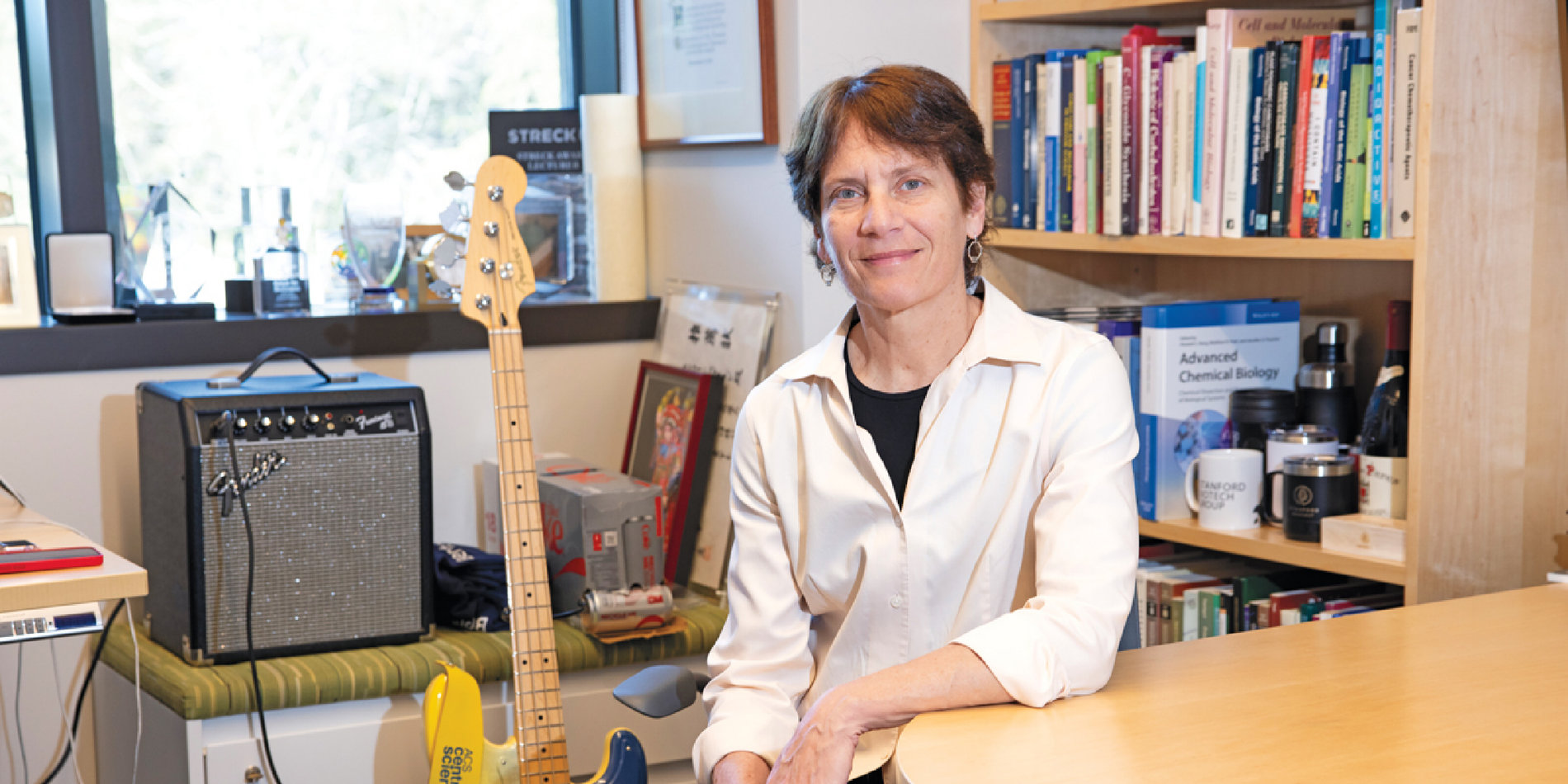Chemical engineer Julieta Gomez-Frittelli has a gut feeling about neuroscience

Conventional wisdom tells us that we should trust our gut. For Julieta Gomez-Frittelli, a chemical engineering graduate student and Stanford ChEM-H Chemistry/Biology Interface (CBI) trainee, this saying takes on special meaning. She studies the nervous system in the gut, called the enteric nervous system, in the lab of Julia Kaltschmidt, associate professor of neurosurgery. Here, she talks about the “second brain” in the gut, her path to her current lab, and the importance of community in her graduate experience.
You are a chemical engineer working in a neuroscience lab. Can you tell me how that happened?
I didn’t take a direct path to get here. During undergrad, I studied chemical engineering and interned a couple times for an oil company, where I also worked after graduating. I then got my master’s in chemical engineering here at Stanford, focusing on biotechnology. It was at that time that I decided to apply to the PhD program and first heard about ChEM-H and the CBI program.
ChEM-H is the reason I’m in my lab now. The CBI program requires at least one research rotation outside of the students’ home departments. Chaitan Khosla proposed I do a joint rotation between his chemical engineering lab and Julia Kaltschmidt’s neurosurgery lab. The Khosla lab studies celiac disease and the Kaltschmidt lab studies sensation in the gut, so there was a natural link between them.
What do you study in the Kaltschmidt lab?
I study the enteric nervous system inside the gastrointestinal (GI) tract, also called the “second brain.” Although we have a good understanding of the basic components of the neural circuits that move contents along the GI tract, we don’t fully understand how those cellular circuits work differently in specific GI tract organs, like the colon, stomach and small intestine. This is important because disease states and conditions can affect GI tract regions differently. For instance, chronic constipation among elderly patients may be at least partially due to age-related colonic dysmotility, a change in the colon’s ability to contract. Specifically, I study a population of neurons that is present in the colon but not in other GI tract organs, trying to elucidate what role these neurons play in colonic motility.
How has your experience influenced your perspective on interdisciplinary research?
I think there are two kinds of interdisciplinary research. In the first and maybe more obvious kind, you bring the skills or knowledge base from one field and apply it to a second field. This model doesn’t capture the interdisciplinary research that I do, since I am not applying particular chemical engineering knowledge in my neuroscience research. Instead, the fact that I was classically trained as a chemical engineer and not as a neuroscientist changes the way I approach problems and, in some ways, how I do research. I consider problems and data using an engineer’s logic that I think is sometimes a unique angle among my peers. When I’m designing experiments or analyzing data, especially in a new topic area, I find that I rely on “IF this, THEN that OR this could be the case” thinking patterns rather than on a lot of background knowledge. I’ve never let that stop me so far!
During my PhD qualifying exams, I told my thesis committee that my research was getting further away from chemical engineering and asked what I should do about that. The feedback I received was “Don’t force a connection that isn’t there. You go where the research is going.”
What role has the CBI program had in your graduate experience?
I see CBI as a community, a gathering place, and a resource network. I have always valued having the time to interact with people doing something completely unrelated to what I do. Just meeting other people and talking with them is rejuvenating. Maybe it won’t specifically lead to an interdisciplinary collaboration, but it expands your mind and makes you consider possible connections to your own work. And having this community finally come together in its own new physical place, the ChEM-H building, will be even more exciting once conditions allow for us to gather!
Research isn’t easy. Even if you are working on something that you find very exciting, research can be challenging, stressful, and exhausting. And the only way to do it is with the support of the people around you, and I’ve found that in my lab and in ChEM-H.



